Plastic Injection Moulding News
News and guides to plastic injection moulding from Fern Plastics, the UK’s leading plastic injection moulding specialists.
What is Plastic Injection Moulding Used For?
As a highly transferable process, plastic injection moulding is used for a wide range of everyday and niche products from mop heads to bird feeders and all of the technical parts in between. Thermoplastics are incredibly versatile and lend themselves to an endless list of uses with plastic injection moulding helping to create all manner of intricate parts, here are just a few.
What is Plastic Injection Moulding?
First and foremost, plastic injection moulding, sometimes known as plastic injection molding, is a process involving creating plastic products from a mould. Thermoplastic polymers are melted down and injected into a mould cavity at high pressure to form a solid product when cooled. These parts can then be used in a range of different applications as stand-alone products or as part of a fully-functioning larger product such as a car.
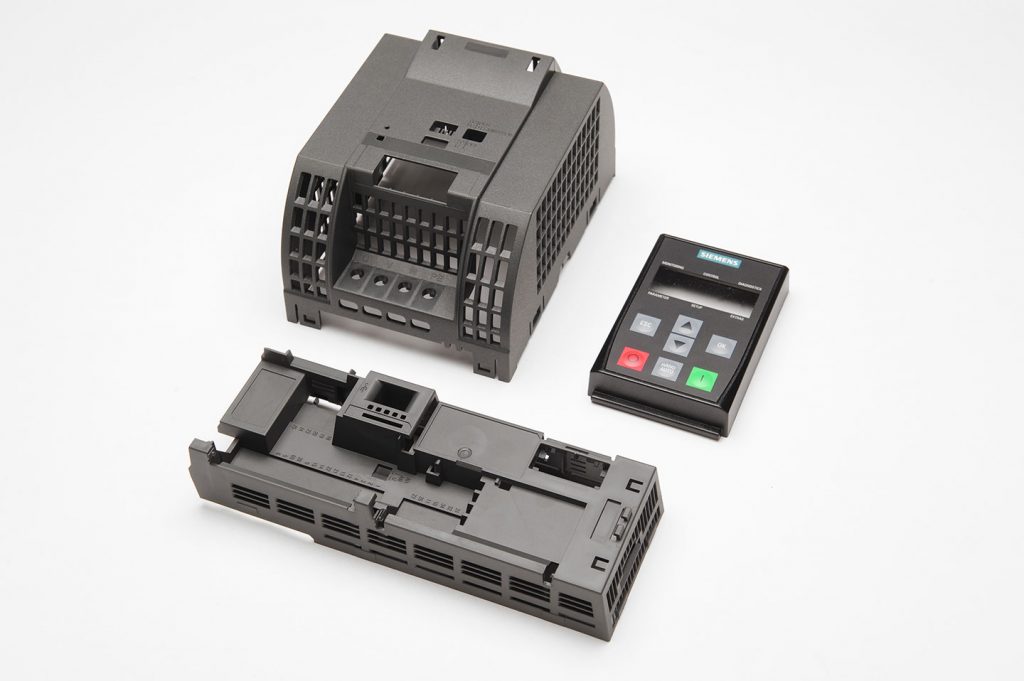
Plastic Injection Moulding Examples
When it comes to plastic injection moulded parts, you can find them in a wide range of industries and uses from the very small to the large. Plastic injection moulded products can be found everywhere from factories to your own garden. Here some of the most common injection molded plastic products and where they are used.
Injection Moulding Products for Machinery and Automotives.
One of the most common examples of injection moulded products is in machinery and automotive components. The ability to form large quantities of identical parts means that plastic injection moulded products are a brilliant use for everything from dashboards to cup holders to radio controls and plastic injection moulded machine fixtures.
Plastic Injection Moulded Examples in Healthcare
When it comes to the healthcare industry, the ability to create sterile components that can easily cleaned is one of the benefits of the plastic injection moulding process. Mass-produced items such as plastic syringes and medication trays can all be created through plastic injection moulding processes. In addition to this, plastic injection moulding examples can also be found in some tools used for medical procedures as well as sharps disposal bins among many other uses for plastic injection molded products.
Plastic Injection Moulding Examples in Everyday Objects
Of course, plastic injection moulded parts are not just used in the automotive or healthcare industries. Many of the consumer goods you use every day are formed from plastic injection moulded parts. Some examples of injection moulded products include everything from toilet seats to barbeque accessories, collectable models to recycling bins and everything in between.
If you are looking for a specialist plastic injection moulding company to produce parts for your business, get in touch with Fern Plastics online or by calling 01902 758282 now to talk to our knowledgeable team. We are able to produce a range of plastic injection moulded products and specialised moulds in a range of finishes and complex features in everything from the small to the large.
Read More
8 Common Plastics Used in Injection Moulding
In the manufacturing world, plastics are central to most of the products we use every day. From food packaging to medical equipment, the durability, versatility and cost-effectiveness of plastic materials make them indispensable, especially in the injection moulding industry. But what plastic is used in injection moulding?
With almost 400 million metric tons of plastic produced in 2021 alone, the demand for plastic molded products is set to continue to rise. This means whether you’re an experienced manufacturer or new to plastic production, choosing the right types of plastic material for injection molding is crucial. In this article, we’ll explore some of the most common plastics used in injection moulding, as well as their benefits and applications.
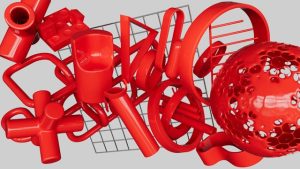
What Plastics Are Used In Injection Moulding?
Below are some of the most popular plastics Fern Plastic uses in injection moulding, along with their properties and typical applications.
- Acrylonitrile Butadiene Styrene (ABS)
- Polycarbonate (PC)
- Polyamide (Nylon)
- PC/ABS (Polycarbonate/Acrylonitrile Butadiene Styrene Blend)
- High-Density Polyethylene (HDPE)
- Low-Density Polyethylene (LDPE)
- Polybutylene Terephthalate (PBT)
- Polyoxymethylene (POM/Acetal)
Acrylonitrile Butadiene Styrene (ABS)
Acrylonitrile Butadiene Styrene, commonly known as ABS, is a highly versatile thermoplastic polymer and possibly the most common plastic used in injection moulding. Thanks to its excellent balance of toughness, rigidity, and impact resistance, ABS is a go-to material for products that require durability and a high-quality surface finish. Acrylonitrile Butadiene Styrene is also popular because it is easy to process, which makes it a favourite among manufacturers for creating complex shapes and detailed components.

Why use ABS?
ABS is particularly valued for its toughness and ability to withstand a wide range of temperatures. It also has good aesthetic properties, as it can be easily coloured and finished to a high gloss, making it ideal for consumer products that need to look appealing while also being durable
Polycarbonate (PC)
Polycarbonate, or PC, is a high-performance thermoplastic, popular for its exceptional strength, clarity, and resistance to heat and impact. Unlike other plastics, polycarbonate retains its toughness across a wide range of temperatures, making it ideal for demanding applications where durability is crucial. It is often used as a glass substitute in various products thanks to its transparency and shatter resistance.
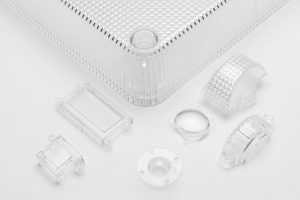
Why Use Polycarbonate?
Polycarbonate is an excellent choice for products that require transparency and high-impact resistance. Its ability to withstand extreme conditions without cracking or breaking makes it ideal for safety and optical applications.
Polyamide (PA) – Nylon
Polyamide, commonly referred to as Nylon, is a family of synthetic polymers known for their excellent mechanical properties, particularly in applications requiring high strength, flexibility, and wear resistance. Nylon’s durability and resistance to abrasion make it a popular choice in both engineering and consumer applications. It is available in various grades, including reinforced types that enhance its performance under extreme conditions.
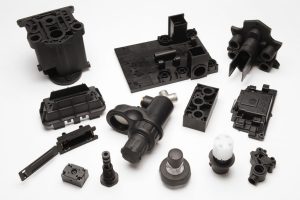
Why Use Polyamide?
Nylon is often used in applications where parts are subjected to high mechanical stress, for example, in automotive or industrial machinery. Its combination of strength, durability, and resistance to wear makes it a reliable material for engineering applications.
PC/ABS (Polycarbonate/Acrylonitrile Butadiene Styrene Blend)
PC/ABS is a blend of Polycarbonate and Acrylonitrile Butadiene Styrene that combines the best properties of both materials. The result has the toughness and heat resistance of PC with the flexibility and ease of processing of ABS. This hybrid material offers enhanced impact strength, making it ideal for applications that require both durability and a high-quality surface finish. Additionally, PC ABS blends are known for their excellent low-temperature performance, making them suitable for environments with fluctuating or extreme temperatures.
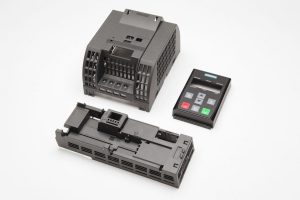
Why Use PC ABS?
This blend offers a balanced combination of the toughness and heat resistance of polycarbonate with the impact resistance of ABS. It is widely used in automotive and electronic applications where durability and aesthetic appeal are essential.
High Density Polyethylene HDPE
HDPE or high-density polyethylene is a thermoplastic polymer and one of the most popular and widely used plastics in the world. Also known as polythene, HDPE is made from petroleum and ethylene and can be used to make recyclable products like milk bottles, pipes and bin bags. This makes it ideal for those looking for sustainable options for plastic moulded parts.
Why Use HDPE?
Its exceptional strength and durability, make HDPE ideal for products that need to withstand tough conditions. Its resistance to chemicals and moisture makes it perfect for durable products from outdoor furniture to piping. HDPE’s recyclability also makes it a go-to choice for sustainable applications.
Low Density Polyethylene LDPE
LDPE or low-density polyethylene is a versatile thermoplastic with properties like low temperature flexibility and high strength. These contrasting features make LDPE an excellent choice for applications where good stress resistance and toughness is required. Low density polyethylene has the same chemical formula as HDPE but its low density makes it more lightweight with high ductility. This makes it suitable for a wide range of products from food packaging to medical devices.
Why Use LDPE?
LDPE’s flexibility and impact resistance makes it a great choice for products that require both toughness and pliability. It’s commonly used in toys and medical prosthetics and offers low water absorption and cost-efficiency. Its ability to withstand low temperatures without becoming brittle is another advantage.
Polybutylene Terephthalate PBT
PBT or polybutylene terephthalate is a versatile thermoplastic polyester resin with a semi-crystalline structure. From automotive parts to medical devices, the versatility of PBT is due in part to its wide range of grades which include flame-retardant and reinforced varieties. Polyester resins like PBT have good flow properties making them excellent engineering polymers for injection moulding.
Why Use PBT?
Polybutylene Terephthalate is perfect for industries requiring heat resistance, mechanical strength, and durability. Its excellent electrical insulation properties make it a top choice for automotive parts, electrical components, and appliances. PBT’s UV resistance and colour stability make it a popular choice for outdoor applications.
POM Acetal -Polyoxymethylene
Also known as acetal, polyoxymethylene or POM is a semi-crystalline thermoplastic with high mechanical strength and rigidity. Naturally opaque or white in colour, POM is available in grades that can be glass-reinforced, toughened and UV-stabilised for a range of demanding applications. Polyoxymethylene is ideal for manufacturing complex, precision parts and its scratch-proof nature makes it ideal for creating high-gloss exposed parts.
Why Use Polyoxymethylene?
POM or acetal is highly regarded for its mechanical strength, rigidity, and low friction, making it ideal for precision parts like gears, fasteners, and bearings. Its dimensional stability and wear resistance are perfect for demanding, high-stress environments such as the automotive and consumer goods industries.
Quality Plastics for Injection Moulding
Choosing the right types of plastic for injection molding is crucial for ensuring that your products meet the required performance, aesthetics and budget. Whether you’re producing automotive components, consumer goods, or medical devices, understanding the properties of these common plastics will help you make informed decisions for your next injection moulding project.
If you need guidance in selecting the right material for your application or you’re looking to optimise your production process, our team at Fern Plastics is here to help. We use all of the materials in this guide in our thermoplastic injection moulding. This helps us to provide our customers with a wide range of options for their plastic moulded products. Our experiences allow us to have a good understanding of which plastic material is best suited to your project. Contact us today to learn more about our injection moulding services and how we can support your manufacturing needs.
Read MoreIs Injection Moulding Sustainable for Plastic Manufacturing?
Plastic injection moulding is a widely used manufacturing process for creating everything from car parts to toys. But in today’s environmentally conscious world, an important question arises, “Is plastic injection molding environmentally friendly?”
By implementing certain sustainable practices, the plastic injection moulding process can be made more sustainable and energy efficient, resulting in less waste, a reduction in overall costs and less negative environmental impact.
What are Sustainable Practices in Plastic Injection Moulding?
Numerous areas in plastic injection moulding can be optimised to make the process friendlier to the environment. These include:
- Utilising recycled plastic materials
- Reducing energy consumption
- Selecting sustainable plastic materials
- Effective waste management

Utilising Recycled Polymers
When considering sustainable practices, you may wonder, “Can recycled plastic be injection moulded?” Recycled plastics can be successfully injection moulded and this practice is becoming increasingly common as more industries focus on sustainability. Processes like closed-loop recycling allow plastics to be recycled within their polymer types to create the same product or different high-quality products of the same type of plastic. Utilising recycled plastic material not only reduces the demand for virgin plastics but also lowers fossil fuel consumption and cuts down the amount of plastic waste in landfills.
Reducing Energy Consumption in Plastic Injection Moulding
The plastic injection moulding machines and the additional equipment involved in the plastic manufacturing process require a lot of energy to operate. Traditional plastic injection moulding machines wasted a lot of energy and were powered by hydraulics and fossil fuels until the late 20th century.
Today, modern electric plastic injection moulding machines are much more energy efficient. As well as utilising renewable energy sources to increase sustainability further, modern plastic injection moulding machines allow for tighter control of process parameters which makes production and energy use much more efficient.
Plastic injection moulding involves heating polymers to high temperatures and using high pressure to inject the melted polymers into their moulds. Since temperatures and pressure levels for various types of plastic will vary, expert injection moulders can optimise these parameters by reducing cycle times to maximise production and reduce unnecessary energy consumption.
What are the Sustainable Plastics For Injection Molding?
Due to the significant environmental impact of producing, using and disposing of conventional plastic, finding eco-friendly alternatives to traditional polymers has become a top priority for plastic manufacturers.
In response, the plastics industry has been developing environmentally friendly materials such as:
- Bioplastics – These bio-based versions of traditional plastics, such as bio-polyethylene are made from sustainable, renewable raw materials like sugarcane, vegetable oils, or food waste.
- Biodegradable Plastics – Polymers like Polylactic Acid (PLA) and Polyhydroxyalkanoates (PHA) are not only bio-based but are also capable of being broken down by naturally occurring microorganisms.
- Compostable Plastics – These plastics decompose into natural substances like water and biomass.
Other thermoplastics like Polycarbonate (PC) and Acrylonitrile Butadiene Styrene (ABS) are also recyclable making them excellent sustainable plastics for injection moulding.
Utilising these sustainable plastics in the plastic injection moulding process helps lower the carbon footprint and reduce plastic waste.
Minimising Waste in Plastic Injection Moulding
Waste in plastic injection moulding typically includes excess material known as sprues and many facilities like Fern Plastics choose to recycle and reuse this plastic material in production. By using in-house granulators to repurpose the waste material, we are also able to reduce the amount of time and resources needed to transport the waste to another facility for processing.
Waste reduction, however, goes beyond the materials used in the injection moulding process. It also includes reducing wasted time and costs. Processes like lean manufacturing aim to reduce lead times and operating costs while maximising productivity and improving the quality of the end product.
Why Choose Sustainable Plastic Manufacturing Experts?
Choosing sustainable plastic manufacturing experts like Fern Plastics allows you to play your part in reducing the environmental impact of producing plastic products for consumer and commercial use. We demonstrate our commitment to sustainability by implementing an environmental management system or EMS. This EMS aligns with the requirements of ISO 14001:2015 and allows us to continually improve our environmental performance.
By partnering with environmentally conscious plastic injection moulders like Fern Plastics, you can future-proof your business by enhancing a sustainable brand image and attracting eco-conscious customers committed to protecting the planet.
If you would like more information about our plastic injection moulding services, in-house tooling or any of our value-added services, contact our team online.
Read MorePlastic Injection Moulding Vs Vacuum Moulding
When it comes to plastic moulded products, two main moulding methods are often discussed, plastic injection moulding and vacuum moulding. But what is the difference between plastic injection moulding and vacuum moulding? We go into the differences between the two plastic moulding types and more.
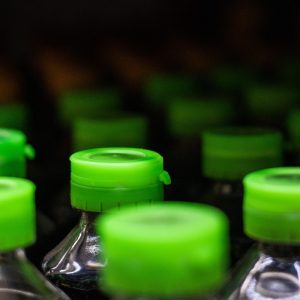
What is Plastic Injection Moulding?
Plastic injection moulding is the process of injecting molten plastic into a pre-designed mould in order to create a plastic moulded product. By injecting molten plastic into a mould at high pressure, the plastic is forced to fill the gaps in the mould and create the shape of the mould design. Once the plastic has cooled, the mould is opened and the plastic injected products are removed from the moulding machine.
What Type of Products Are Made From Plastic Injection Moulding?
Plastic injected products can be found everywhere in the home and beyond. Plastic injection moulding is often used to produce items such as recycling bins, medical tools, car parts, toys and more with the ability to highly customise the plastic mould meaning that a wide range of intricate designs can be produced in numerous quantities.
What is Vacuum Moulding?
Vacuum moulding, also known as thermoforming, is a process during which a heated sheet of plastic is stretched over a vacuum forming tool in order to form a plastic part. The thermoforming plastic sheet forms the shape of the mould through a vacuum process and as the sheet cools it forms a hard shape before the moulding tool is removed.
Here’s how the thermoforming process works:
- Preparation – A flat sheet of thermoforming plastic is clamped into a frame. The type of plastic chosen depends on the specific requirements of the part being produced.
- Heating – The sheet is then heated until it becomes soft and pliable. The temperature and heating time vary depending on the material’s thickness and type.
- Moulding – After the thermoplastic sheet is heated to the desired temperature, it is quickly moved to the mould or tool.
- Thermoforming – Once the heated sheet is in position over the vacuum-forming tool, a vacuum is applied beneath the mould, which suctions the plastic sheet tightly against the mould’s surface. This forms the plastic into the shape of the mould. Any excess material is trimmed away.
- Cooling and Release – After the plastic has taken the shape of the mould, it is cooled. Once it has cooled and solidified, the vacuum is released and the formed plastic part can be removed from the mould.
What Type of Products Are Made From Vacuum Moulding?
Depending on the design of the plastic moulding, vacuum moulding can create a variety of designs and styles. Items such as plastic bathtubs, garden equipment and plastic utensils can be made using the vacuum moulding process.
Plastic Injection Moulding Vs Vacuum Moulding, Which is Best?
When it comes to plastic formed products, each technique is different. For tight tolerances, plastic injection moulding is often more suitable than vacuum forming whilst the plastic injection process can also often work out as cheaper than the vacuum moulding process, particularly for larger projects where a high volume of plastic injected products need to be formed. The process of vacuum forming is sometimes also less controlled than plastic injection moulding die to the heated plastic being stretched over a mould.
What are the Advantages of Injection Moulding Compared to Vacuum Moulding?
There are a few advantages to using plastic injection moulding when compared to vacuum moulding.
High precision and tight tolerances – Plastic injection moulding allows for the production of parts with extremely tight tolerances and high precision. This process is capable of producing complex, intricate parts with consistent wall thickness, intricate details and minimal variations. In contrast, vacuum forming may have some limitations in achieving the same level of precision due to the stretching of the heated plastic sheet over the mould.
Higher production volumes – Injection moulding is better suited to high-volume production runs when compared to vacuum moulding. The cycle times in injection moulding are typically faster than vacuum forming, and the process can produce a large number of parts in a shorter period of time. This efficiency makes it more cost-effective for long production runs
Material selection – Plastic injection moulding allows for the use of a range of thermoplastic materials including high-performance engineering plastics like Acrylonitrile Butadiene Styrene (ABS), Nylon (PA) and Polycarbonate (PC). This means that injection-moulded parts can have superior properties such as heat resistance, greater strength, chemical resistance and more. Injection moulding is often chosen when the application demands specific material characteristics and performance.
Plastic Injection Moulding Specialists
As plastic injection moulding specialists, we offer a wide range of plastic injection moulding services to help bring your project to life. We have a number of years experience and have faced every challenge there is in terms of plastic injection moulds so are perfectly placed to answer any questions you may have.
Contact our team now on 01902 758282 to find out more about the range of plastic injection moulding services and related services we offer and talk to our specialists.
Read More
Injection Moulding Costs – Is it Cost-Effective?
The plastic injection moulding process produces hundreds and thousands of products every single day. From large-scale production projects to smaller, more bespoke mouldings, plastic injection moulding can produce a wide variety of shapes, styles and finishes, all with perfect uniformity. Low injection moulding costs mean that extremely large quantities can be produced with little effort in a relatively short space of time. Here’s our guide to the cost-effectiveness of plastic injection moulding.
Is Plastic Injection Moulding Cost-Effective?
One of the most attractive elements of plastic injection moulding is that is it an extremely cost-effective plastic product production process. Huge amounts of product can be produced from just a single injection mould making it a time-efficient and cost-effective production process. Whilst the initial costs may seem higher than other plastic production methods, he ability to produce tens of thousands of parts from one tool means that plastic injection mould costs, in the long run, are extremely cost-effective, especially for larger-scale or repeat projects.
Creating the Right Mould for your Project
Whatever your project, the right plastic injection mould can help make it a success without the gruelling production process other types of product creation may involve. At Fern Plastic, we know what goes into creating the perfect mould for the plastic injection moulding process and know that the right mould can save time and resources on post-production adaptations later on down the line.
How Do We Save Money on Injection Moulding Costs?
Here at Fern Plastics, we have a number of years of experience creating high-quality plastic injection moulds and injection moulded parts. We like to think that our process has been streamlined to be as cost-effective and environmentally friendly as possible in order to pass on those benefits to our customers. Some of the ways to keep plastic injection moulding costs as low as possible whilst still maintaining ultra-high quality levels include things such as modifying and reusing moulds to improve their performance and continue creating brilliantly-bespoke plastic injection moulded products. We also aim to recycle and reuse the majority of our product waste in order to lessen the environmental impact of the injection moulding process.
Here’s an in-depth look at how injection moulding costs can be reduced.
Optimise The Design of Moulded Parts
Smart part design is one of the most impactful ways to reduce the cost of plastic injection molding. By working closely with experienced engineers, you can create parts that are easier to mould and reproduce. Not only does this demonstrate design best practices, but also improves product efficiency. This results in reduced material requirements and minimises the need for secondary processes. Consider design elements like uniform wall thickness and avoiding undercuts or other intricate features that may require complex tooling. With efficient part design, overall cycle times are reduced with fewer discarded parts which saves time and money.
Select The Right Injection Moulding Material
Choosing the right injection moulding material is vital for cost reduction. While high-performance resins may offer excellent properties, they can significantly increase production costs. Injection moulding specialists will evaluate the required properties of the part carefully and consider using alternative materials that meet the necessary specifications at a lower cost. Recycled plastics can also be a viable option for certain applications, which reduces both material expenses and the impact on the environment.
Optimise Tooling Design and Maintenance
Investing in high-quality tooling ensures consistent part quality and extends tool life. While initial tooling costs might be higher, better-quality moulds can result in lower production costs in the long run. Regular maintenance of the moulds is essential to prevent part defects, downtime and costly repairs.
Utilise Multi-cavity Molds
Using multi cavity molds allows multiple parts to be simultaneously produced in each molding cycle. This approach significantly increases the efficiency of production while reducing cycle time and lowering the overall cost per part. However, it is essential to balance the savings with the maintenance requirements of complex multi cavity molds.
Minimise Post-Molding Operations
Reducing the need for post-molding operations can save both time and money. Creating parts that require minimal or no secondary processes such as additional surface finishing and trimming. Integrating features directly into the mould can eliminate the need for additional manufacturing steps.
Mould Design Modifications
Before production, it is worth closely analysing the structural requirements of moulded parts. By closely examining the part’s structure, areas that are critical for function and quality can be identified and other areas can be modified. For example, gussets or ribs can be used to enhance the structural integrity of the part, replacing a completely solid area. This not only simplifies production but can also reduce weight, making it cost-efficient for shipping, storage and delivery. Additionally, replacing solid areas with hollow sections where appropriate, reduces the amount of injection moulding material used in the process which can further reduce costs. However, it is important to ensure that the quality isn’t compromised by the modifications as any savings would be cancelled out by the costs associated with failed parts.
Collaborate with Expert Injection Moulders
Partnering with experienced injection moulders can provide valuable insights and cost-saving suggestions. Collaborate with an injection moulding company that has a proven track record of optimising injection moulding processes and can offer innovative solutions and value-added services to cut costs without compromising quality.
Looking for a Cost-Effective Plastic Injection Moulding Specialist?
Our team are experts in creating industry-leading plastic injection moulded products with a full-service process from design to production to ensure your product is exactly how you envisioned it. Contact our team now to find out more about our plastic injection moulding costs or any other questions you may have on the services we provide.
Read MoreCan Injection Moulded Plastic be Recycled?
Countless objects around the world both inside and outside of the home are now made from plastic. However, plastic waste has become a huge problem for the planet with many non-recycled plastic products going to landfill. As producers of plastic injection moulded products, we answer questions such as can injection moulded plastic be recycled and what we are doing to help reduce plastic waste in the injection moulding industry.
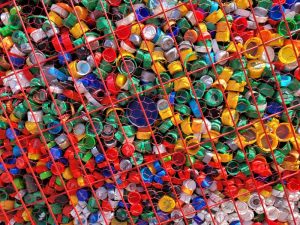
Can Injection Moulded Plastic be Recycled?
When it comes to recycling your plastic moulded products, the good news is that most of the time, the plastic they are formed from can be recycled. At Fern Plastics, we ourselves recycle our plastic waste in a conscious effort to reduce the amount of plastic we dispose of. Plastic injection moulding uses molten plastic injected into pre-made moulds to form a finished plastic item. These injection moulded plastic products are used for everything from car parts to household items such as cutlery and toys, many of which will be recyclable. The plastic used in these injection mouldings and products made from recycled materials can be reused and reformed time and again to reduce waste.
Recycling plastic that has been injection moulded does not result in any loss of quality making it ideal for the rapid production of recycled plastic products on a large scale. As well as reducing waste going to landfill, recycling our plastic waste and reusing plastics within our process helps to reduce the amount of raw materials needed for plastic injection moulding, reducing pollution.
How Do You Reduce the Amount of Plastic Waste at Fern Plastics?
At Fern Plastics, we know how important it is to reduce the amount of plastic waste we produce. That’s why reuse and recycle up to 100% of our plastic and manufacturing waste to be used for future projects without compromising on quality. We also recycle the plastic bags our raw material is supplied in and use in-house robots and granulators to recycle plastic waste. Our state of the art machinery ensures that every piece of plastic we use for our injection mouldings is used to its full capacity whilst our partners Recycled UK then re-process any plastic we cannot use for other non-technical markets. Manufacturing with recycled materials and recycling our plastic waste helps us to reduce the amount lost in our plastic injection moulding processes.
You can find out more about how we reduce plastic waste in our blog.
Plastic Injection Moulded Products from Fern Plastics
Here at Fern Plastics, we are industry leaders when it comes to plastic injection mouldings and injection moulded parts. We work closely with suppliers and clients to ensure our production perfectly fits their needs with in-house designers perfecting the plastic injection moulding process. We frequently use recycled plastics and recycled polymers such as recycled ABS in our moulding process to avoid waste at every stage of the process and create a more sustainable business model for our recycled plastic injection mouldings.
To find out more about our plastic injection moulding service and how we create an efficient, high-quality plastic injection moulding process, contact our team now online or by calling 01902 758282.
Read MoreWhy is Plastic Injection Moulding So Effective?
Plastic injection moulding is one of the most efficient and cost-friendly plastic product production processes. Countless household and business products are formed from plastic injection moulding, perhaps even items you didn’t think were injection moulded. We talk through why plastic injection moulding is so effective.
What is the Plastic Injection Process?
Plastic injection moulding is conducted through precisely injecting molten plastic at pressure into a specially-designed mould. Once the molten plastic cools, a firm product is produced that can stand the test of time. Over moulding and other processes can be used to create more bespoke, intricate plastic injection moulded designs that work for a variety of purposes.
Why is Plastic Injection Moulding So Effective?
Fewer plastic production processes are as effective as plastic injection moulding. One of the main reasons for this is the impressive cost-effectiveness plastic injection moulding enjoys. Injection moulding can produce high volumes of identical products with ease and with a much quicker turnaround than other plastic moulding processes. The efficiency of the injection moulding process is also a factor in the fantastic cost-effectiveness of plastic injection moulding. Once the specialised injection mould has been designed and created by our in-house experts, that same mould can be used countless times, producing plastic injected products with ease at very little cost per item.
Fast, Efficient Plastic Injection Moulding
Our state-of-the-art plastic injection moulding machines work round the clock to ensure high-speed plastic product production that doesn’t compromise on quality or design. The efficiency of custom plastic mouldings results in low labour costs and lower end costs with the ability to use multiple types of plastic within the injection moulded products.
Strong, Fit-for-Purpose Design
The nature of the plastic injection moulding process makes it ideally adaptable for all manner of purposes. From household objects to car parts to medical equipment, plastic injection moulded products can be designed with a number of parts and features to fit a range of uses. Multiple type of plastic can be combined within the injection moulding to form a bespoke product with intricate details and complex shapes repeated time and again for each and every plastic injection moulded product. The ability to create custom plastic mouldings with ease is one of the ways plastic injection moulding is so effective.
Plastic Injection Moulding Specialists
When it comes to ensuring an effective plastic injection moulding process, Fern Plastics are leaders in their industry. Crafting bespoke plastic mouldings using time-honed skills and state-of-the-art technology Fern Plastics can create intricate designs and parts with extremely close consistencies. To find out more about our plastic injection services, contact our team now on 01902 758282.
Read More
